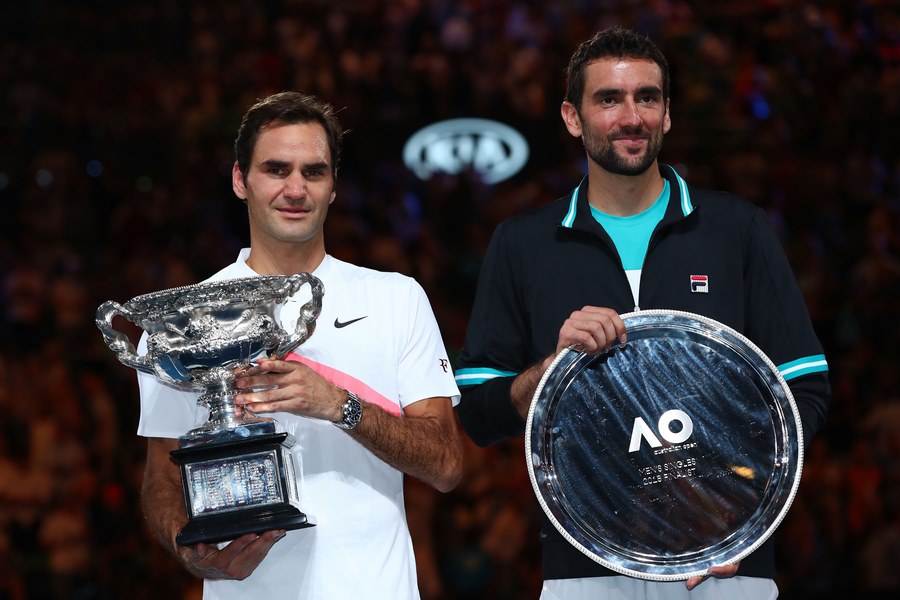By Daniele Malafarina
The Australian Open tournament organizers have announced that the “Happy Slam” will return to seeding only 16 players instead of the current 32 as of 2019. This decision could potentially produce clashes between the top players in the world and other members of the top 20 in the first few rounds. According to a few sports analysts, this will make the early rounds more interesting and appealing, while others claim that too many upsets in the first few days of competition could cause imbalances in different sections of the draw affecting the final stages of the tournament.
Draws featuring 32 seeds were first implemented at Wimbledon in 2001. We conducted an analysis of the 46 Slams that were contested during the time period between the 1990 Australian Open and the 2001 French Open, when main draws still featured 16 seeds: The goal is to study how often top 16 seeded players lost to players ranked between No. 17 and 32 in the first two rounds.
Among a few significant Grand Slam events that were affected by major upsets in the early rounds, the 1990 French Open is the perfect example of how seeding 32 players can certainly make a difference compared to seeding only 16. Ivan Lendl – who was world No. 1 at the time – decided to withdraw from Roland Garros and better prepare for the grass court season, while chasing an elusive Wimbledon title. Stefan Edberg and Boris Becker were the first two seeds and lost in the first round against two extraordinary young talents: 19-year-old Sergi Bruguera who went on to win back-to-back French Open titles in 1993 and 1994, and 18-year-old Goran Ivanisevic who would reach his first Wimbledon semifinal a couple of weeks later. Even if the 1990 French Open had featured 32 seeds, at the time Bruguera and Ivanisevic wouldn’t have been ranked high enough to make the cut. Plenty of notable absences heavily affected that edition of Roland Garros, with 10 of the first 42 ranked players withdrawing before the tournament started: Lendl, Gilbert, McEnroe, Mayotte, Wilander, Sampras, Steeb, Skoff, Masur and Van Rensburg. The No. 32 seed would have been assigned to the No. 42 ranked player, leaving No. 43-ranked Ivanisevic and No. 46-ranked Bruguera out. As a result, 32 seeds wouldn’t have protected nor saved Edberg and Becker.
Besides the 1990 French Open, there are very few other cases that are worth remembering. We counted eight major upsets in the eleven years that were analyzed in our study.
- No. 26-ranked Pioline upset No. 4-seeded and two-time champion Rafter at the 1999 US Open, when the Australian had just come back to the tour after an injury.
- No. 1-seeded Kafelnikov was surprised by No. 30-ranked Hrbaty at the 1999 French Open.
- No. 25-ranked Moya prevailed over No. 6-seeded and defending champion Becker at the 1997 Australian Open. Moya eventually reached the final before losing to Sampras.
- No. 2-seeded Sampras lost to No. 24-ranked Schaller in the first round of the 1995 French Open.
- No. 2-seeded Stich was defeated by No. 23-ranked Washington in the first round of the 1994 Australian Open. A few months later, Stich also lost to No. 33-ranked Krickstein in the second round of the French Open.
- No. 19-ranked Novacek upset No. 3-seeded and defending champion Edberg in the second round of the 1993 US Open.
- No. 28-ranked Edberg defeated No. 7-seeded Krajicek in the first round of the 1996 US Open, when the Swede was competing in the last Grand Slam tournament of his illustrious career and the Dutch wasn’t one of the main contenders for the title.
- No. 2-seeded Sampras lost to No. 25-ranked Philippoussis in the first round of the 2000 French Open, but it is safe to say that the American wouldn’t have gone much further on clay, especially at the twilight of his career.
We analyzed 164 matches that were contested by the 16 seeds against players ranked between No. 17 and 32 in the first two rounds of 46 Grand Slam events. 117 of those matches were won by seeded players with an astonishing ratio of 71%. Only 6 of the 47 upsets involved the first four seeded players, which means less than 4%. On the other hand, the first four seeded players won 27 of 33 matches (82%) against players ranked between No. 17 and 32.
7 of those 27 wins were remarkably scored by Pete Sampras, and 4 of them occurred in 1996 when the American defeated Gustarfsson and Bruguera at Roland Garros and Reneberg and Philippoussis at Wimbledon. In 1996 Sampras reached the semis in Paris and collapsed against Kafelnikov after surviving three consecutive five-setters against Bruguera, Martin and Courier. Had the tournament featured 32 seeds and given Sampras a few easier matches in the early rounds, Pistol Pete would have probably had better chances to win the French Open title that year. A few weeks later at the All England Club, Sampras suffered his only Wimbledon loss between 1993 and 2000 against Kraijcek in the quarterfinals, citing fatigue as a key factor.
On average, one of the first 16 seeded players lost to a contestant that would have been seeded in a 32 seed draw only once per Grand Slam tournament. The 1991 French Open is the only case with four upsets in the same tournament, while the 1993 US Open had three.
In conclusion, the stats show that upsets caused by a draw with 16 seeds instead of 32 are rather insignificant. An average of one appealing feature match per day would certainly create more buzz around the first four days of competition in Grand Slam tournaments, without seriously compromising the chances of the best players in the world.
(Article translation provided by T&L Global – Translation & Language Solutions – www.t-lglobal.com )






